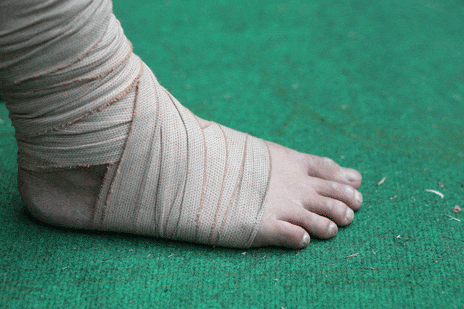According to a news article that appeared recently in The New York Times, recent studies suggest that the effects of an ankle sprain could linger throughout one’s life and alter how—and how often—one moves.
Therefore, the article suggests, sprained ankles should be taken seriously, and those who experience one should seek treatment by a physical therapist.
“The ankle is the base of the body,” says Tricia Hubbard-Turner, PhD, ATC, a professor of kinesiology at the University of North Carolina at Charlotte, in the news story. “Everything starts with the ankle.”
Per the news story, Hubbard-Turner co-authored three studies that, the story notes, raise serious questions about the benignity of ankle sprains.
In one study, the article explains, Hubbard-Turner and her research team asked 20 college students with chronic ankle instability—a condition caused by an ankle sprain in which the ankle easily gives way during movement—and 20 students without an ankle injury to wear a pedometer for 1 week.
Per the article, the research team controlled the participants for variables such as sex, BMI, and general health.
After looking at the results, the team noted that the students with chronic ankle instability took 2,000 steps fewer than the non-ankle-injured participants, on average, each day.
The news story notes that these findings echoed an earlier study performed by Hubbard-Turner and her research team, but this time on mice.
In a third study, published recently in The Journal of Sports Science and Medicine, Hubbard-Turner and her team continued to follow the mice from their previous study, until the mice passed away from old age.
The news article explains that the research team found that the repurcussions of a single ankle sprain lingered throughout the mice’s lives. The mice that experienced a mild sprain while they were young continued to run less and more slowly throughout their lives, and the mice that experienced a severe sprain ran even fewer miles and at the slowest speeds.
“In these animals, a single sprain had led to far more inactivity” throughout their lives than among the animals with intact ankles, Hubbard-Turner states in the news story.
“Don’t ignore a sprain,” she adds.
“If you twist or otherwise hurt your ankle, consult a doctor or physical therapist about diagnosis, treatment and rehabilitation,” the news story author writes. “And if you have sprained an ankle in the past, even if the injury seems fully healed, consider balance testing by a physical therapist to determine whether you are more wobbly than you suspect.”
Of course, according to the news article, the best way to avoid the ramifications of a sprained ankle “is to not sprain it in the first place,” Hubbard-Turner explains.
[Source: The New York Times]





